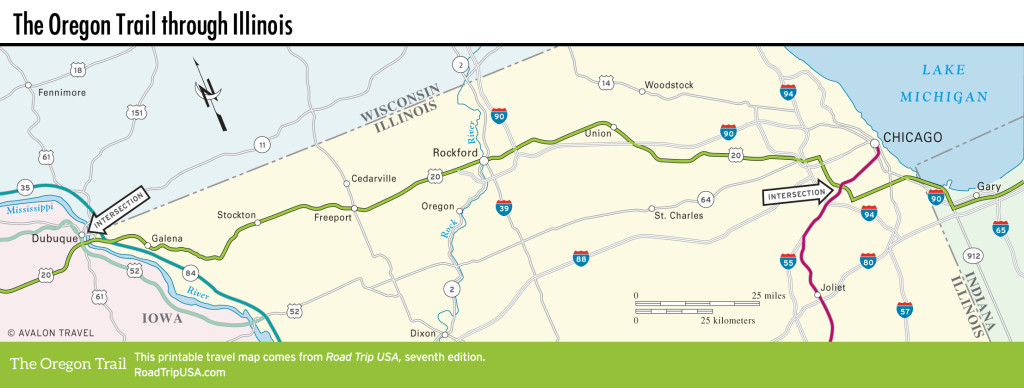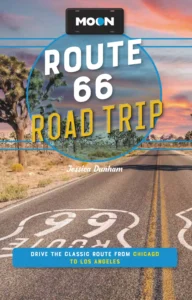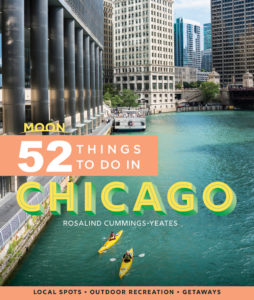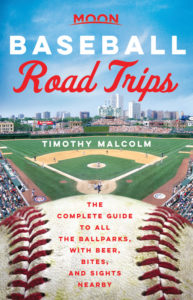Chicago
From Oak Park, US-20—which somehow has managed not to be diverted onto one of Chicago’s many freeways—crosses the Des Plaines River and the Chicago Sanitary and Ship Canal, then bends east onto 95th Street, following that road all the way across Chicago to the Lake Michigan waterfront. East of downtown, US-20 bends south along Lake Michigan into Hammond, Indiana, and the industrial districts along the Calumet River.
Visiting Chicago
New York may have bigger and better museums, shops, and restaurants, and even Los Angeles has more people, but Chicago is still the most all-American city, and one of the most exciting and enjoyable places to visit in the world. After shrinking for decades as its suburbs grew and grew, Chicago seems to have stabilized. The city reinvents and reinvests in itself, with new parks, art galleries, and condo towers, as a new generation discovers the pleasures of urban life. Commerce capital of Middle America, Chicago’s location at the crossroads between the settled East and the wide-open West has helped it to give birth to many new things we now take for granted: the skyscraper, the blues, and the atomic bomb (not to mention Oprah and Obama!).
Away from the Loop, the skyscraper-spiked lakefront business district that holds North America’s tallest and most impressive collection of modern architecture in its oblong square mile, much of Chicago is surprisingly low-rise and residential. Also surprising, considering its inland location, is that Chicago has a high percentage of immigrants, with a multiethnic character readily apparent in numerous enclaves all over the city. Nearly 200,000 Poles form one of the largest communities outside Poland. Even more significant, the Latinx population is close to three million (almost 29 percent of the city’s total population). Whatever their origin, residents take a particular pride in identifying themselves as Chicagoans, and despite the city’s rusting infrastructure, their good-natured enthusiasm for the place can be contagious.
For an unbeatable introduction to Chicago, hop aboard a river cruise offered by the Chicago Architecture Foundation (312/922-8687, daily Apr.-Nov., $46 and up). Departing from where the Michigan Avenue Bridge crosses the river and Wacker Drive, these informative and enjoyable tours offer an unusual look up at the city’s magnificent towers. If you can’t join a tour, enjoy the RiverWalk park and promenade, which fronts the river on both sides of the bridge. North from the river, the “Magnificent Mile” of Michigan Avenue is a bustling shopping strip that holds yet more distinctive towers, along with many of the city’s top shops, restaurants, and hotels. Starting with the Gothic-style Tribune Tower—decorated with bits of famous buildings and monuments stolen by Tribune staffers from around the globe—and running past the circa-1869 Historic Water Tower at its midpoint, the “Mag Mile” ends in the north with the 100-story John Hancock Center.
Along the lakefront at the heart of downtown, the Art Institute of Chicago (111 S. Michigan Ave., 312/443-3600, $25) boasts one of the world’s great collections of 19th- and 20th-century French painting and a broad survey of fine art from all over the world. Among its many fine paintings, the institute gives pride of place to Grant Wood’s American Gothic, which he painted as a student and sold to the institute for $300. North and east of the museum’s beautiful Modern Wing is Chicago’s latest great claim to fame: Millennium Park, a 25-acre (10-hectares) public garden full of fabulous sculptures and a magical Frank Gehry-designed outdoor concert pavilion that’s home to numerous summer concerts and events.
More than just another baseball game, watching the Chicago Cubs play at Wrigley Field (1060 Addison St., 773/404-2827) is a rite of passage that taps into the deepest meanings of the national pastime. Ivy covers the redbrick outfield walls, and Chicagoans of all stripes were relieved to exorcise a century-long curse with a 2016 World Series win. The other Chicago baseball team, the White Sox, play at modern Guaranteed Rate Field (333 W. 35th St., 312/674-1000), south of the Loop alongside I-94.
Where to Eat and Stay in Chicago
Chicago is home to one of America’s busiest and most infuriating airports, O’Hare (ORD), 17 mi (27 km) northwest of the Loop and well served by Chicago Transit Authority (CTA) subway trains, shuttle services, and taxis. Chicago’s other airport, Midway, is closer to the center of town, and Chicago is also the hub of the national Amtrak system, with trains pulling in to Union Station from all over the country. To get around, you’re better off leaving the car behind and riding the CTA elevated train—better known as the “L”—which serves the entire city almost around the clock.
Chicago has all sorts of top-quality, cutting-edge-cuisine restaurants, but to get a feel for the city, you’ll be better off stopping at the many older places that have catered to Chicagoans forever. Near the start of old Route 66, Lou Mitchell’s (565 W. Jackson Blvd., 312/939-3111) is one of the greatest breakfast and lunch places on the planet. Along with deep-dish pizza (as served at Uno’s, Pizzeria Due, etc.), hot dogs, a.k.a. red hots, a.k.a. Polish sausages, are a real Chicago specialty that can be sampled at a dozen world-class spots. Try them at Jim’s Original (1250 S. Union Ave., 312/733-7820, daily 24 hours), just west of the I-90 Dan Ryan Expressway. Farther from downtown, toward O’Hare, there’s Superdawg Drive-In (6363 N. Milwaukee Ave., 773/763-0660), where you can soak up the 1940s character.
Places to stay in Chicago include the moderate likes of the Best Western River North (125 W. Ohio St., 312/467-0800, $76 and up), in the trendy River North gallery district, which offers free parking within a quick walk of the Magnificent Mile along Michigan Avenue. Chicago’s classiest older hotel is the Drake Hotel (140 E. Walton Place, 312/787-2200, $163 and up), just off the lake, with elegant public areas and gracious staff. Even if you only soak up the exuberant 1920s Moorish-style lobby, or go for a swim in the palatial 14th-floor pool, the most fabulous place to stay could be the InterContinental (505 N. Michigan Ave., 312/944-4100, $135 and up), though the smallish rooms expose the truth that the building started life as a Shriner’s health club.

















